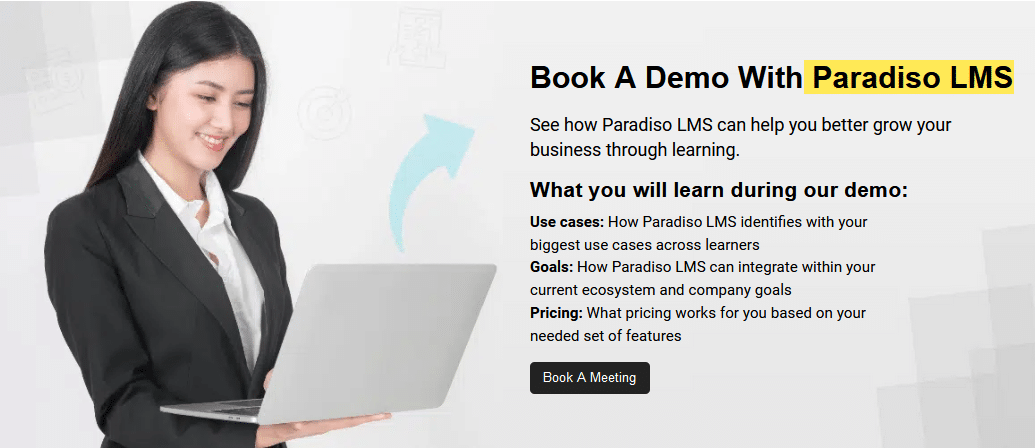1. Understanding Cloud-Based LMS: Evolution and Impact on Modern Education and Corporate Training
In recent years, cloud-based Learning Management Systems (LMS) have dramatically transformed education and corporate training landscapes. They offer unparalleled flexibility, scalability, and accessibility, making learning more efficient and widespread. This section traces the origins of cloud LMS, highlights their evolution over time, and explains why they are considered game-changers in today’s learning environments.
The Genesis of Cloud-Based LMS
The idea of cloud computing emerged in the early 2000s, revolutionizing how software applications are hosted and accessed. Unlike traditional on-premise LMS platforms that required extensive local infrastructure, cloud-based LMS operate on remote servers accessible via the internet. This change was driven by enterprises seeking agility, cost savings, and easier deployment through cloud technologies.
Evolution of Cloud LMS
Initially, LMS solutions were installed locally, demanding significant technical expertise and financial investment. As cloud technologies advanced, vendors began offering SaaS (Software as a Service) LMS platforms, providing hosted solutions with real-time updates, automatic backups, and minimal IT support. Over the years, features expanded from basic course management to include advanced analytics, mobile compatibility, and seamless integrations, transforming cloud LMS into comprehensive learning ecosystems.
Why Cloud LMS Is Revolutionizing Education and Corporate Training Today
- Enhanced Accessibility and Flexibility: Learners can access materials anytime, anywhere, and from any device, supporting diverse learning needs and remote work.
- Cost Efficiency and Scalability: Organizations benefit from reduced infrastructure costs and can easily scale their training efforts without large upfront investments.
- Continuous Updates and Innovation: Providers regularly upgrade platforms with new features and security improvements, ensuring users always have the latest tools.
- Data-Driven Insights: Advanced analytics monitor progress, evaluate effectiveness, and personalize content to boost engagement and better outcomes.
- Supporting Modern Learning Trends: Cloud LMS facilitates blended, microlearning, and social learning models, meeting contemporary educational demands.
2. Essential Functionalities of Cloud LMS Platforms
Cloud Learning Management Systems (LMS) play a pivotal role in modern corporate and educational training by incorporating advanced features that address evolving organizational needs. Understanding these core functionalities highlights why cloud LMS are indispensable for establishing scalable, accessible, and efficient learning environments.
Scalability for Growing Organizations
One key benefit of cloud LMS is their inherent scalability. Unlike traditional systems, these platforms can effortlessly handle expanding user bases and content without requiring major infrastructure investments. Cloud providers utilize elastic resources, allowing organizations to scale up or down based on real-time requirements—supporting initiatives like large-scale onboarding or enterprise-wide certifications.
Accessibility for Remote and Distributed Teams
In today’s remote work era, accessibility is vital. Cloud LMS ensure learners can access materials 24/7 from any device with internet connectivity. This supports geographically dispersed teams, enabling participation in virtual classrooms, assessments, and collaborative activities regardless of location. Mobile compatibility further enhances engagement by allowing learning on smartphones and tablets.
Cost-Efficiency and Reduced IT Burden
Cloud-based solutions significantly cut upfront costs related to hardware and reduce ongoing maintenance. Managed by the provider, these platforms eliminate the need for extensive internal IT intervention, freeing resources for strategic priorities. Subscription-based pricing models simplify budgeting and often lead to lower total ownership costs over time.
Key Functional Features Supporting Organizational Goals
- Centralized Content Management: Simplifies creation and management of learning materials.
- Reporting and Analytics: Provides insights into learner progress and engagement metrics to inform decisions.
- Integration Capabilities: Seamlessly connects with HR, CRM, and other enterprise tools for streamlined workflows.
- Personalized Learning Paths: Offers tailored content to meet individual learner needs.
- Automation and Notifications: Supports enrolment, reminders, and certification tracking for compliance and engagement.
3. Comparing Cloud-Based LMS Solutions with Traditional On-Premise Systems
Choosing between cloud LMS and traditional on-premise systems is a pivotal decision for organizations. Both options offer unique advantages and challenges that can influence training effectiveness, scalability, security, and operational management.
Flexibility and Scalability
Cloud LMS are inherently flexible and scalable. They facilitate quick adjustments to support changing training needs and user growth without hardware modifications. Their pay-as-you-go model supports rapid deployment, ideal for businesses with fluctuating demands. On the other hand, on-premise systems require significant planning, hardware procurement, and lengthy upgrades to scale, potentially causing delays and increased costs.
Maintenance and Technical Support
Maintaining on-premise LMS involves handling server management, security, backup, and updates internally, demanding dedicated IT resources. Cloud LMS providers manage all maintenance, including security patches, backups, and technical support. This reduces internal IT workload, allowing focus on content and strategic initiatives. Continuous updates are seamlessly integrated, offering the latest features without downtime.
Cost Implications
On-premise systems usually involve high initial investments in hardware, licenses, and setup. Cloud solutions operate on subscriptions, spreading costs over time and improving cash flow. While long-term operational costs might include subscription fees and customization, cloud platforms typically lower overall ownership expenses and reduce the need for extensive internal infrastructure.
Deployment Speed and Accessibility
Cloud LMS can often be deployed within days or weeks, supporting rapid training rollouts and global access. Conversely, on-premise deployment can take months, with access limited mainly to on-site or securely connected networks. Cloud solutions facilitate remote work and global scalability effortlessly.
Security and Data Control
On-premise LMS provides organizations with complete control over data security and customization, which is advantageous for strict regulatory environments. Cloud providers implement rigorous security protocols, encryption, and compliance standards like GDPR or HIPAA, often exceeding internal capabilities. The choice depends on organizational security requirements and regulatory considerations.
🚀 Ready to See Paradiso LMS in Action?
Let’s show you how Paradiso LMS can work for you.
4. Real-World Applications of Cloud LMS Across Multiple Sectors
Cloud LMS have broad, transformative applications across various sectors. Their flexibility and scalability enable organizations to improve training delivery, operational efficiency, and learner engagement worldwide. Here are some notable examples from different industries:
Corporate Training and Development
In the corporate sector, platforms like Paradiso LMS facilitate on-demand training for global employees. These systems support onboarding, compliance, and skill-building initiatives—helping large organizations deliver consistent content across geographies. Many add a formal cloud computing certification to upskill engineers and IT stakeholders in parallel.For example, financial institutions use cloud LMS for regulation compliance, while tech firms deploy them for continuous professional growth. Their scalability allows training thousands simultaneously, reducing costs and enhancing effectiveness.
Education Sector and E-Learning
Educational institutions leverage cloud LMS for remote and blended learning models. Universities and schools deliver lectures, assessments, and collaborative projects online. During crises like COVID-19, cloud LMS proved essential to sustaining education continuity. They enable personalized learning, foster interaction, and expand access to quality education for diverse student bodies.
Healthcare and Medical Training
Healthcare providers utilize cloud LMS for ongoing medical education, compliance, and skill development. Medical staff access up-to-date protocols, participate in virtual simulations, and meet accreditation standards. Hospitals deploy cloud LMS to train staff on new procedures swiftly, ensuring compliance and patient safety, regardless of location.
Manufacturing and Industrial Training
Manufacturing firms use cloud LMS to train workers on machinery, safety, and quality standards. With Industry 4.0 advances, these platforms facilitate just-in-time learning for new technologies. Mobile access allows remote workers and onsite teams to stay updated, boosting productivity and safety.
Government and Non-Profit Organizations
Government bodies deploy cloud LMS for compliance, civic education, and emergency awareness. Non-profits leverage these platforms to train volunteers, enhance community initiatives, and disseminate vital information—reaching wider populations efficiently without extensive physical infrastructure.
Overall, cloud LMS has proven their versatility, impacting multiple industries by enabling scalable, flexible, and engaging learning experiences that adapt to organizational needs.
5. Key Criteria for Choosing the Right Cloud LMS Platform
Picking the ideal cloud-based LMS involves evaluating several critical factors to ensure it aligns with organizational goals. Key criteria include scalability, security, integrations, and user experience, guiding you toward a platform that supports current and future needs.
Scalability
The platform should efficiently support your organization’s growth, handling increasing users, content, and data seamlessly. Look for solutions with flexible storage options and modular features, enabling effortless expansion without performance issues, according to industry research.
Security
Data security is paramount. Choose an LMS compliant with standards like ISO 27001, GDPR, and FERPA. Features such as encryption, multi-factor authentication, and regular audits safeguard sensitive information—ensuring compliance and peace of mind.
Integration Options
An LMS that integrates with your existing systems (HR, CRM, content libraries) increases efficiency. Look for APIs supporting standards like SCORM, xAPI, and LTI—facilitating seamless workflows and consistent data flow across platforms.
User Experience
An intuitive, accessible interface enhances learner engagement. Mobile responsiveness, personalized dashboards, interactive content, and ease of navigation lead to higher participation and better learning outcomes.
By focusing on these key aspects—scalability, security, integration, and user experience—you can select a cloud LMS platform that not only meets your current training demands but also adapts to future growth, providing a robust, engaging, and compliant learning environment.
6. Exploring the Features and Benefits of Paradiso LMS
Paradiso LMS is a leading cloud-based e-learning platform designed to elevate organizational training. Its comprehensive features and flexible deployment support scalable, engaging, and personalized learning experiences. Key benefits include seamless accessibility, high customization, and insightful analytics.
One of the platform’s core strengths is its high degree of customization. Organizations can tailor the interface, workflows, and content delivery to match branding and specific learning objectives, increasing user satisfaction and retention.
Paradiso LMS provides advanced analytics and reporting, enabling administrators to monitor progress, evaluate course performance, and identify areas for improvement—helping optimize training strategies continuously.
Furthermore, it integrates easily with enterprise tools such as CRM, HRMS, and content management systems. It also supports multiple content formats—including videos, SCORM, xAPI, and mobile content—catering to various learning styles.
Its scalable infrastructure and security features adhere to industry standards, safeguarding data and ensuring ongoing compliance. An intuitive admin interface simplifies large-scale management, decreasing operational complexity.
Overall, Paradiso LMS combines advanced cloud deployment, customization, analytics, and integrations, making it an ideal choice for organizations aiming for a flexible, reliable, and engaging e-learning environment capable of growth and adaptation.
Explore LMS Resources That Drive Results
Get instant access to top webinars, videos, case studies, and ebooks — all about smarter learning.
7. Practical Guidance for Successful Cloud LMS Onboarding, Adoption, and Optimization
Implementing a cloud LMS requires strategic planning to ensure maximum return on investment. Successful onboarding, user adoption, and ongoing optimization are vital for delivering effective learning outcomes and aligning with organizational goals.
Effective User Onboarding Strategies
Start with hands-on tutorials and guided tours to familiarize users with the platform. Use onboarding checklists, interactive demos, and training videos to ease transition. Appoint LMS ambassadors within departments to provide peer support and troubleshoot early issues, fostering confidence and engagement.
Promoting User Adoption
To encourage continual use, communicate clear benefits tied to personal growth, compliance, or productivity. Incorporate gamification elements such as badges and leaderboards to motivate participation. Gather ongoing feedback through surveys, and provide support via live training and helpdesk services to maintain momentum.
Optimizing Your Cloud LMS for Better Learning Outcomes
Leverage analytics to track engagement and performance. Personalize learning pathways based on learner data to increase relevance. Continuously update content and incorporate multimedia and social learning features. Regular optimization based on user feedback and data ensures the platform remains effective, engaging, and aligned with evolving needs.
Organizations like Paradiso LMS offer extensive customization, automation, and integration tools, further enhancing training impact when these strategies are applied effectively.
8. Emerging Trends Shaping the Future of Online Education
Artificial Intelligence (AI) in Online Education
AI is transforming online learning by enabling adaptive systems that personalize content based on individual learner behaviors and preferences. AI tools like chatbots provide 24/7 support, enhance engagement, and improve outcomes—reducing churn and elevating satisfaction.
Mobile Learning (m-learning)
The rise of smartphones and tablets has made mobile learning a dominant trend. Content optimized for mobile devices—like short videos and responsive interfaces—offers learners the flexibility to learn anytime, anywhere, supporting microlearning and increasing retention.
Personalized Training Pathways
Adaptive and personalized pathways tailor learning journeys based on goals, prior knowledge, and preferences. These customized experiences boost motivation, persistence, and skill acquisition, especially vital in corporate upskilling and lifelong learning initiatives.
Integrating Trends for Future-Ready Education
Combining AI, mobile learning, and personalization creates responsive, engaging educational ecosystems. Forward-looking institutions and organizations will adopt these innovations to stay competitive and deliver highly relevant, accessible learning experiences.
Staying informed about these trends allows adopters to harness new tools for better outcomes. Platforms like Paradiso LMS now integrate these capabilities to support scalable, personalized, and mobile-friendly training programs.
Conclusion
Today’s organizations face increasing pressure to deliver effective, engaging, and scalable e-learning programs. The right LMS—like Paradiso—serves as the backbone to achieve these goals. Its rich features, customization options, and analytics enable powerful, flexible training that meets diverse needs.
By adopting advanced LMS solutions, organizations can foster continuous learning, improve performance, and realize measurable ROI. Embrace the future of online education—explore and implement a proven platform like Paradiso LMS to elevate your training strategy and stay ahead in a competitive digital landscape.

















